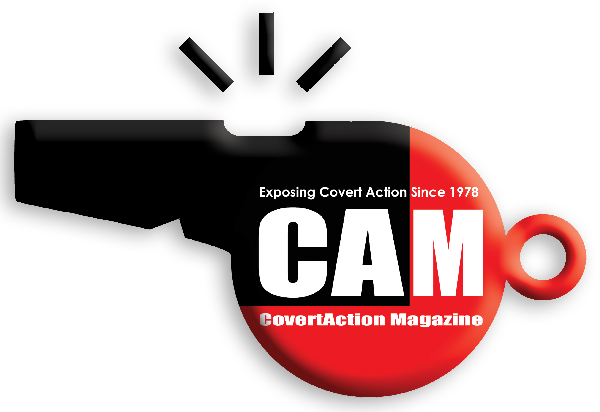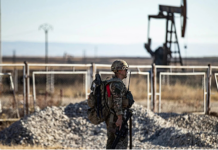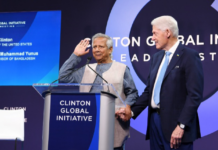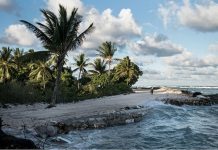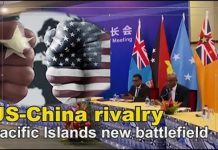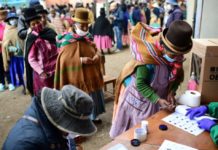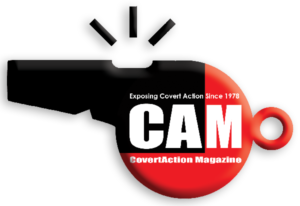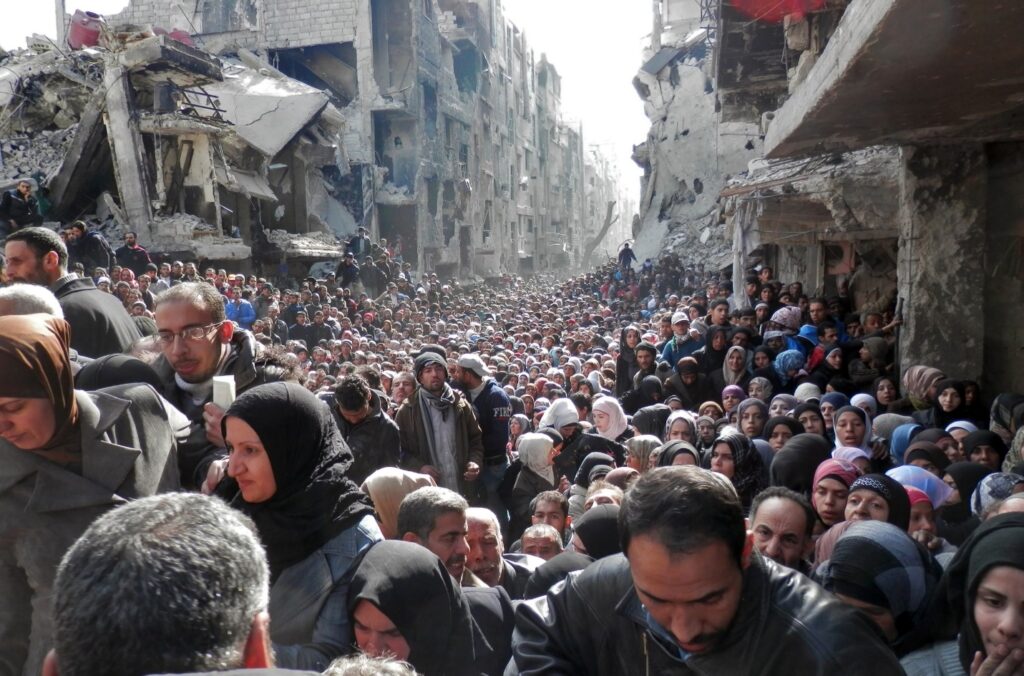
[This is the second of a two-part series. Part I can be found here—Editors]
From 2011 to 2016, demonstrations in Syria against the Ba’athist government headed by Bashar al-Assad escalated into an armed insurgency and large-scale pitched battles, sieges and counter-sieges in and around major Syrian cities such as Aleppo and Damascus. During that time, agents of U.S. diplomacy, soft power, defense and intelligence, alongside U.S. Arab and NATO allies, developed a robust media, civil society and military support infrastructure to boost the insurgents against the Syrian government. This article introduces some of the key institutions and players involved in U.S. and Western soft-power programs in the Syrian Civil War and their connections with covert operations against the Syrian Ba’athist government.
“Exactly What the Supporting Powers to the Opposition Want”
Early in the Syrian Civil War, an August 2012 classified report by the Defense Intelligence Agency (DIA) explained that the Syrian conflict was “taking a clear sectarian direction” and that theocratic and sectarian Salafi forces, namely the Muslim Brotherhood (MB) and al-Qaeda in Iraq (which would later evolve into the Islamic State of Iraq and Syria, or ISIS), were “the major forces driving the insurgency in Syria.”[1]
The DIA further reported their predictions about how the crisis might unfold: that either the Syrian government would survive and control Syrian territory or the conflict would develop into a proxy war with the Iranians, Russians and Chinese backing the government while the Western countries, Gulf states, and Turkey backed the insurgency.
The DIA outlined the potential of a “Salafist principality” establishing itself “in Eastern Syria (Hasaka and Der Zor [sic]),” stating that “this is exactly what the supporting powers to the opposition want” to undermine the region’s Shia powers, specifically in Syria, Iran and Iraq. The final un-redacted section of the report predicted that the Islamic State in Iraq (formerly al-Qaeda in Iraq) could use the conflict to declare an Islamic State uniting groups in both Syria and Iraq.[2]
The report was remarkable in its concise, plain language that accurately described significant military and geopolitical aspects of the Syrian conflict from 2011. The conflict quickly took on a sectarian, violent character, led by religiously theocratic and Salafi forces of the MB and al-Qaeda. Al-Qaeda would split into the competing forces of ISIS and Jabhat al-Nusra (meaning Support Front, commonly known as the al-Nusra Front) headed by Ahmed al-Sharaa, aka Abu Mohammed al-Julani, who reformed al-Nusra into Hay’at Tahrir al-Sham in 2017 and became president of Syria after leading the main rebel assault that overthrew Assad in December 2024.
These factions represented the strongest military forces of the general armed opposition backed by NATO countries and Arab Sunni Gulf states.[3] In the context of the ongoing U.S. struggle against al-Qaeda in Iraq (officially renaming itself the Islamic State of Iraq in 2006) the DIA report predicted the rise of ISIS, which by 2014 did in fact establish significant territories straddling eastern Syria and western Iraq.
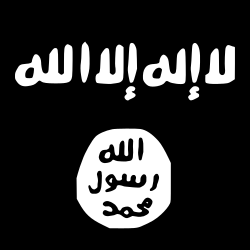
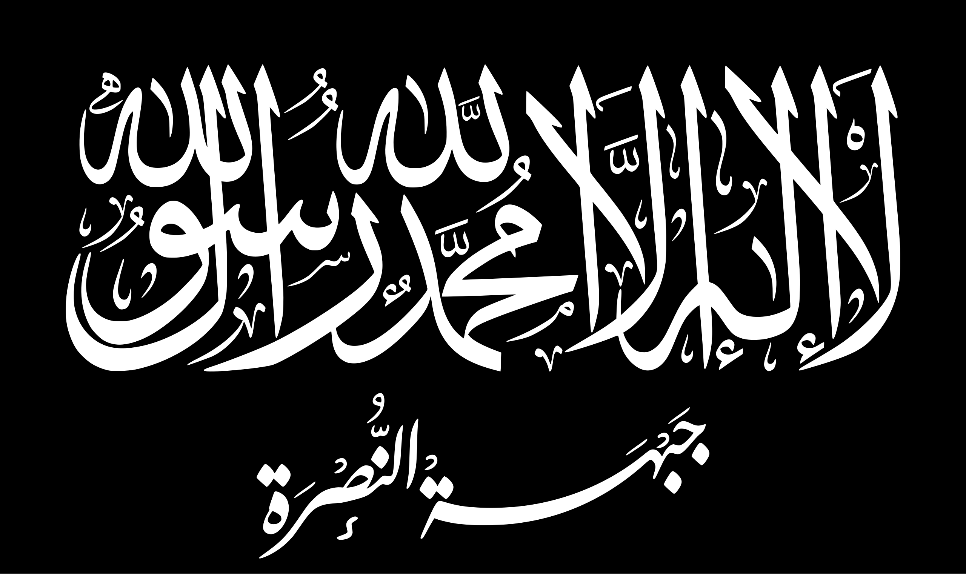
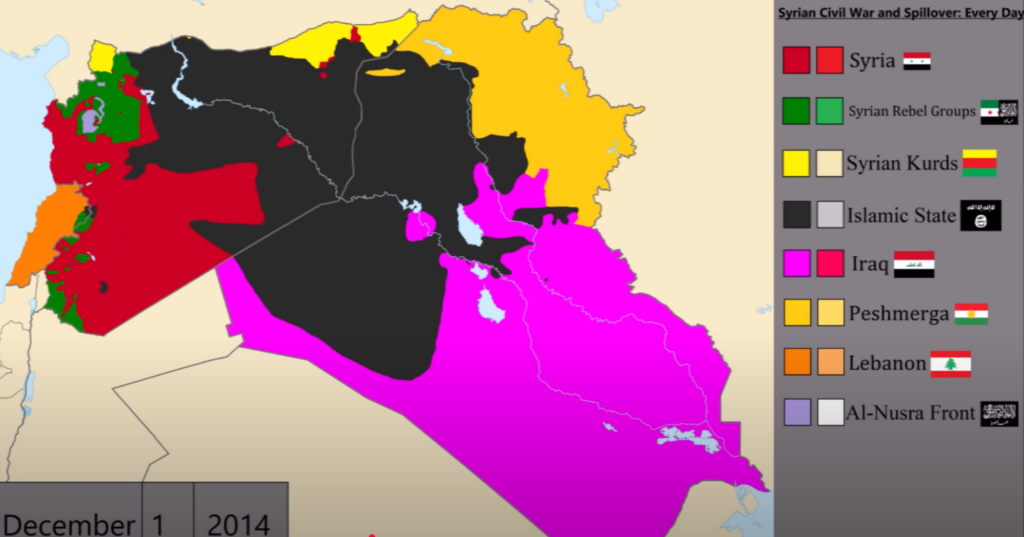
The DIA report demonstrates that at least some elements of the U.S. national security establishment were aware of the violent, sectarian, and theocratic forces in the opposition and were nonetheless willing to support these forces to one extent or another.
It also contradicts the public narrative that government officials and mainstream media pushed that the Syrian Civil War was simply a struggle of liberal, democratic freedom fighters against an evil dictatorship.
Inside the classified reports of the U.S. government and military, officials took a realpolitik geopolitical approach and repeated established habits of weaponizing religious fundamentalism to fight secular nationalist and socialist adversaries in Muslim-majority countries.
The public narrative of a domestic Syrian uprising for democracy became important for facilitating and justifying foreign intervention in the conflict. U.S. and Western soft-power agencies and non-governmental organizations such as the National Endowment for Democracy (NED), U.S. Agency for International Development (USAID), and UK Foreign Office created a transnational, largely covert propaganda and civil society infrastructure in and around Syria.
This infrastructure was designed to facilitate opposition activities and administration on the ground while also creating and maintaining a plausible narrative of a domestic democratic uprising for Syrian, regional and international (particularly U.S. and European) audiences.
Soft-Power Hawks
As explained in Part I of this series, the U.S. diplomats pushed a hardline regime-change policy in Syria prior to the civil war, and media, civil society, and democracy-promotion programs were a key pillar of that hardline policy.
This trend continued during the early years of the war. US Ambassador to Syria Robert S. Ford toured around Syria in 2011, telling demonstrators and rebel fighters that the U.S. was on their side, inciting them with promises of support that often failed to materialize or make a decisive difference.[4]
Along with then-CIA Director David Petraeus and Secretary of State Hillary Clinton, Ford became an early proponent of arming and training anti-government rebels.
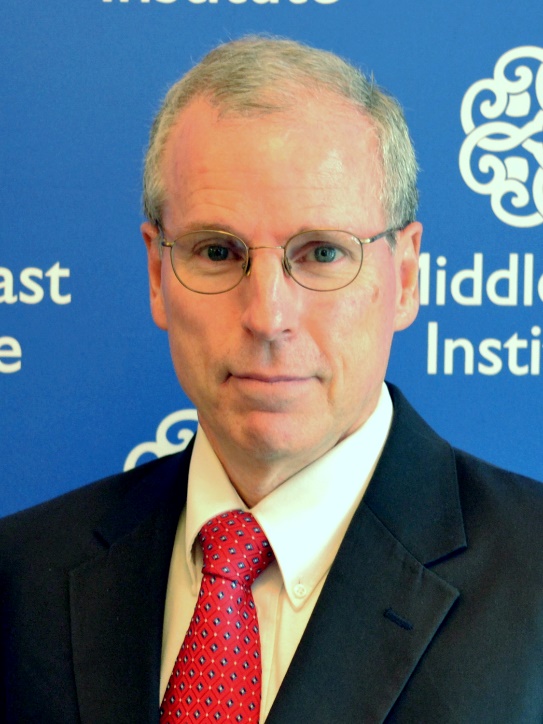
The leadership of the NED and its core grantees were influential supporters of intervention in Syria, including military action.
In a May 2012 speech at New York University, while Syria descended into a full-scale civil war, long-time NED President Carl Gershman criticized the Obama administration for showing a weak response to the Syrian crisis.
Gershman called on the U.S. to set up “safe havens” in cities such as Homs, Hama, and Idlib, and safe passages to support opposition forces in moving within Syria and between neighboring countries, which was a pretext for greater levels of military intervention.
Gershman argued that, to avoid a years-long, regionally destabilizing, sectarian civil war, the U.S. needed to lead with sanctions and military steps to remove Assad and create a political transition process, but he did not detail how much U.S. military might or how many troops on the ground would be necessary to achieve that vision.[5]
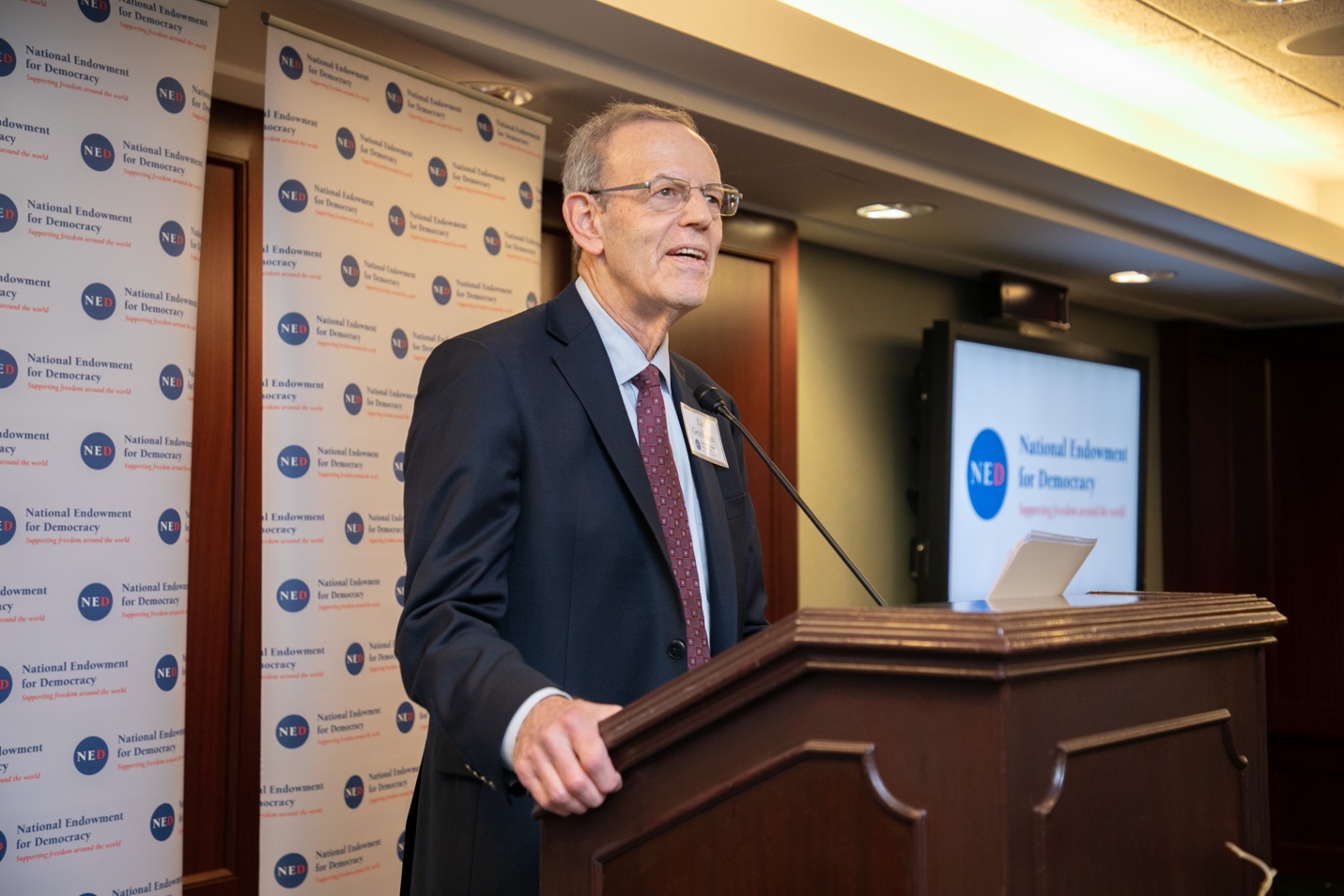
Senator John McCain (R-AZ) was one of the most influential figures in Washington promoting U.S. regime-change intervention.
McCain was the long-time chairman of the International Republican Institute (IRI), the international wing of the U.S. Republican Party and core grantee of the NED and USAID, until his death in 2018.
He also held a seat on the Senate Armed Services Committee, serving as committee chair from 2015 to 2018.
McCain was a strong supporter of arming rebels and using the U.S. military to overthrow Assad. In May 2013, he secretly traveled to Syria, becoming the highest-ranking American to enter Syria during the war. McCain met there with Salim Idris, chief of the rebel command structure called the Supreme Military Council, and other rebel leaders from across Syria.[6]
His trip caused a regional scandal when a Lebanese newspaper reported that one of the rebels in a photo op with McCain, Mohammad Nour of the Northern Storm Brigade, had led the kidnapping of eleven Lebanese Shiite pilgrims in Syria.[7]
In 2017, McCain made another secret trip to Syria, this time to visit U.S. troops and Kurdish allies occupying the oil and agricultural fields of Syria’s northeast.[8] Being an influential senator, McCain was able to draw media attention with these unannounced visits as well as consistent statements in the Senate and media backing intervention.
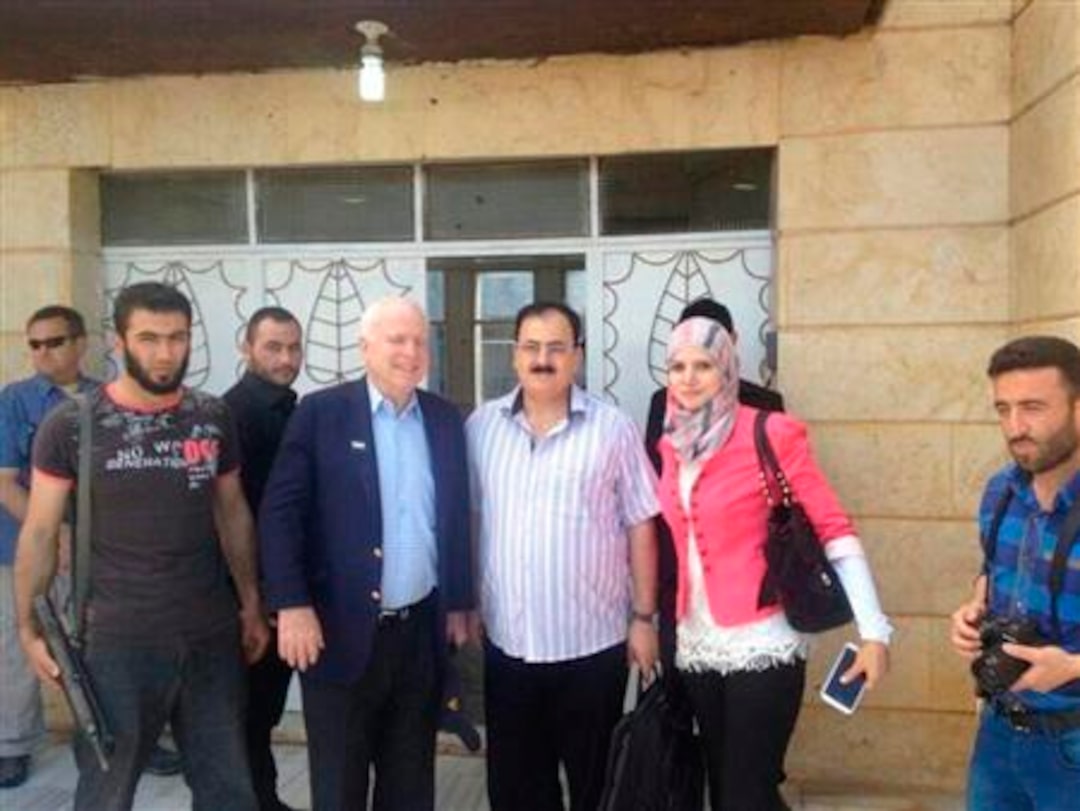
Another supporter of U.S. military intervention was Madeleine Albright, former Secretary of State under the Clinton administration and long-time chair of the National Democratic Institute (NDI), an NED offshoot with loose affiliation to the U.S. Democratic Party. Albright urged Congress to authorize military intervention as early as September 2013 in response to alleged chemical weapons attacks.[9]
In November 2016, while Syrian rebels were losing the battle for Aleppo, Albright led a bipartisan task force organized by the Atlantic Council. Its report called on the U.S. to increase its covert operations and support for opposition groups, use its military power to enforce “safe zones” (protected by U.S. forces from air and ground attacks), and prevent the Syrian government from retaking East Aleppo.[10]
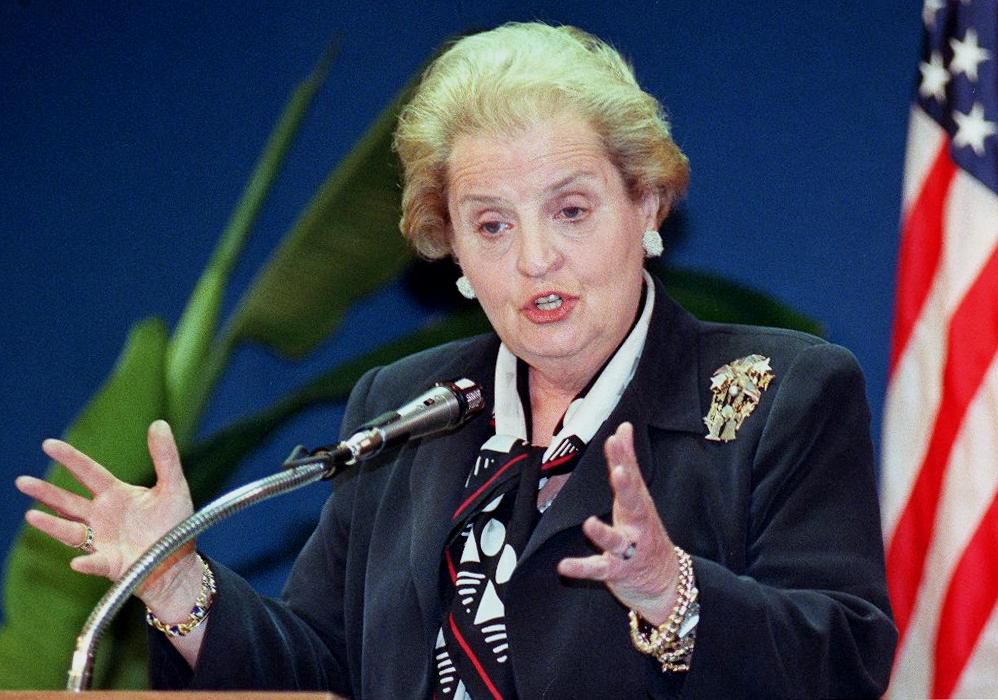
While many high-level government officials and leaders of democracy promotion or soft power institutions in the U.S. called for decisive military intervention, President Barack Obama and Vice President Joe Biden were concerned that such action might create greater problems like the instability and violence resulting from recent interventions in Iraq and Libya.
Rather than direct military action, the Obama administration decided to rely on covert action, developing Operation Timber Sycamore (2012–2017), the CIA’s most expensive program since Operation Cyclone in Afghanistan (1979–1992). Operation Timber Sycamore focused on supplying hard-power weapons, training and funding to the armed opposition groups, but evidence indicates that an extensive and largely covert soft-power operation was initiated around the same time, bringing together the same powers of the U.S., UK, Turkey and Arab monarchies.
U.S. and UK Create a Rebel Media and Management Program
Based on currently available documentary evidence, perhaps the most significant soft-power player influencing the Syrian conflict and popular narratives surrounding it was an international conflict and social science research consultancy. Analysis Research Knowledge, commonly known as ARK, was founded in 2011 and based in Dubai in the United Arab Emirates.[11]
Wielding expertise in the art of public relations and the science of data compilation and evaluation, ARK and its business partners produced and interpreted data and provided technology, training and international networks to support rebel public relations and media narratives aimed at targeted audience demographics.
ARK agents and partners on the ground in Syria cultivated relationships with rebel militias, delivered key services to facilitate rebel administrations, and provided the raw video and photo resources necessary to build pro-rebel narratives. These programs aimed to influence perceptions of the Syrian War for Syrian, regional and global audiences.

Starting in 2012, ARK became a contractor with the U.S. Department of State (DoS) and the UK Foreign and Commonwealth Office (FCO, now known as the Foreign, Commonwealth and Development Office) to provide soft-power support to anti-government Syrian forces.
ARK was first mentioned in mainstream Western media in October 2012, when Foreign Policy reported that the U.S. DoS pledged $45 million to support the Syrian opposition through its new Office of Syrian Opposition Support (OSOS). OSOS was set up with the assistance of a research consultancy, Pursue Ltd.[12]
The UK initially dedicated £5 million to the program.[13] Pursue Ltd. was directed by Alistair Harris OBE (Order of the British Empire), a former UK diplomat who also founded ARK.[14] The Foreign Policy article described ARK as a DoS implementing partner as well as an adviser and intermediary for the “Friends of Syria,” a group of countries favoring regime change in Syria, to transfer money to the Syrian opposition. It was also the first mention of ARK funding and consulting the opposition media outlet Basma (meaning fingerprint in Arabic).[15]
The Foreign Policy article showed first that the U.S. and UK governments invested significant funds in Syrian media programs early in the war and, second, that not only did the U.S. fund ARK through the DoS, but ARK founder Alistair Harris may have also been instrumental in establishing OSOS in the first place.
DoS spokesperson Victoria Nuland announced that OSOS was training the opposition in August 2012, and The Telegraph reported that Alistair Harris oversaw that same program, though they later edited the article to anonymize Harris.[16]
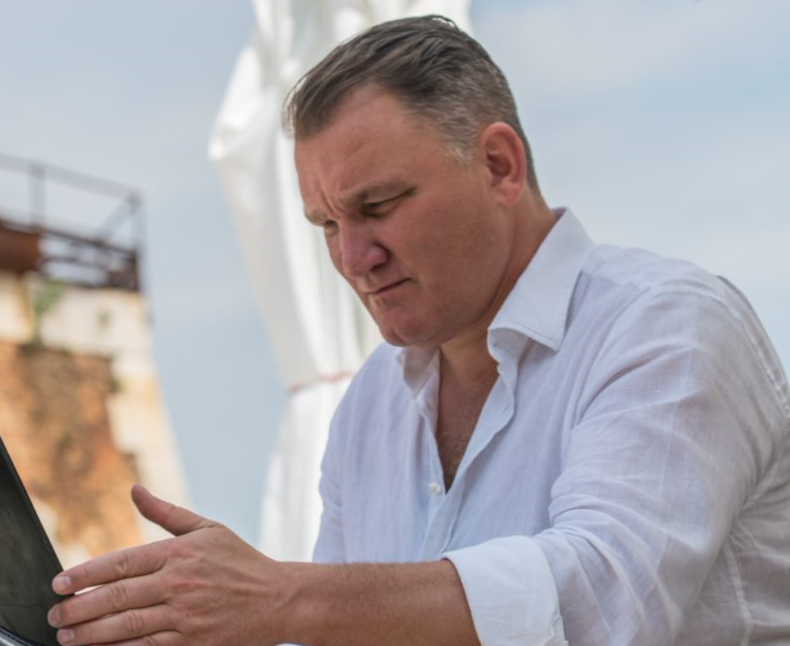
The White Helmets and the Politics of Humanitarian and Atrocity Stories
In 2012, ARK formed teams which would create an organization that operated within Syria and served as a bridge linking foreign and Syrian rebel propaganda, civil society and administration efforts. That organization was Syria Civil Defence, popularly known as the White Helmets.[17]
The White Helmets promoted themselves as nonpartisan, grassroots, volunteer search and rescue teams who would run into war zones to dig people out of rubble, put out fires, and record the horrors of war. However, they operated almost exclusively in Sunni Arab, rebel-held areas and their media were aimed at supporting the rebels and undermining the Syrian government and its allies.
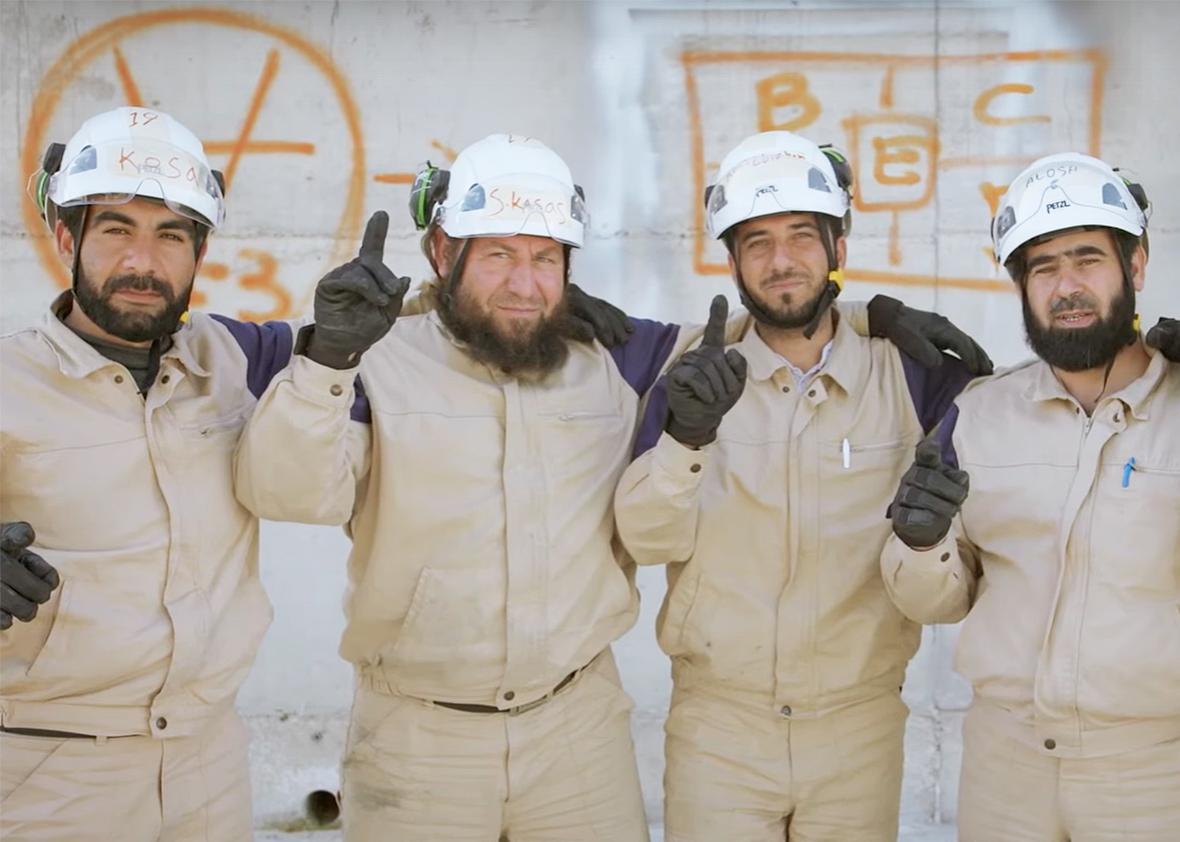
The initial leader of the White Helmets was James Le Mesurier, a former British military intelligence officer and private security contractor for the United Arab Emirates, who joined ARK in 2011 as its director of strategy. Le Mesurier organized the initial civil defense teams from a base in Türkiye.[18]
In 2013, he started the non-profit Mayday Rescue Foundation in Dubai, near ARK’s headquarters, but later moved Mayday to the Netherlands. Le Mesurier’s non-profit delivered international funding, supplies and training to the White Helmets. By 2021, the White Helmets received approximately €100 million from the UK, Germany, the Netherlands and Denmark, $54.7 million from USAID, and several million dollars more from Japan, Canada and Qatar.[19]

As the Syrian war dragged on, armed rebel groups established control over villages and cities, and prospects for a quick end to the war diminished. This meant that foreign pro-rebel, soft-power operations had to not only demonize the opposing side and valorize the opposition but also support rebels in administering their territories and civilian populations.
The White Helmets combined these two tasks together in one organization. The group received training and equipment to provide services that gave a modicum of governance to rebel-held territories. Such services included search and rescue, medical attention and transportation, fire suppression, and post-battle clean-up and reconstruction programs. Simultaneously, however, the White Helmets received training and equipment to film themselves and other foreign-funded civil society organizations providing these services in and near war zones.
This allowed them to create large amounts of quality audio and video recordings for media products and narratives that emphasized the atrocities of the Assad regime and the liberal values of the rebellion. The White Helmets combined media and civil society activities in ways that allowed them to sell pro-rebel, anti-government narratives to local and international audiences from an organization that, on the surface, appeared to be grassroots, neutral and humanitarian.
The medical and humanitarian aspects of the White Helmets helped them become important players in perhaps the greatest controversies of the Syrian Civil War, the alleged use of chemical weapons. President Obama made chemical weapons his Weapons of Mass Destruction “red line” for intervening against Assad in August 2012, meaning that Obama declared he would be far more likely to intervene militarily if he were convinced that Assad used or planned to use chemical weapons.
The White Helmets were often the first responders on the ground when a military attack or exchange occurred, whether it was chemical or conventional. The White Helmets were thus positioned to record such events and turn them into atrocity propaganda, and chemical weapons atrocities promised to incite the greatest foreign action against the prime rebel adversary, the Syrian government.
Secretary of State John Kerry expressed the importance of the kind of recordings made by the White Helmets in a secret September 22, 2016, meeting with Syrian rebel civil society representatives, including White Helmet leaders, at the Dutch Mission to the United Nations.
During the meeting, when White Helmets and opposition leaders complained of Russian air strikes hitting their civil defense teams, Kerry asked if they had any video of these strikes, saying, “I’ve been looking for videos for ages, I’ve been asking for them.” U.S. officials wanted verified footage and photos of the planes and the munitions being dropped to support the case for intervention, not simply footage of victims.[20]
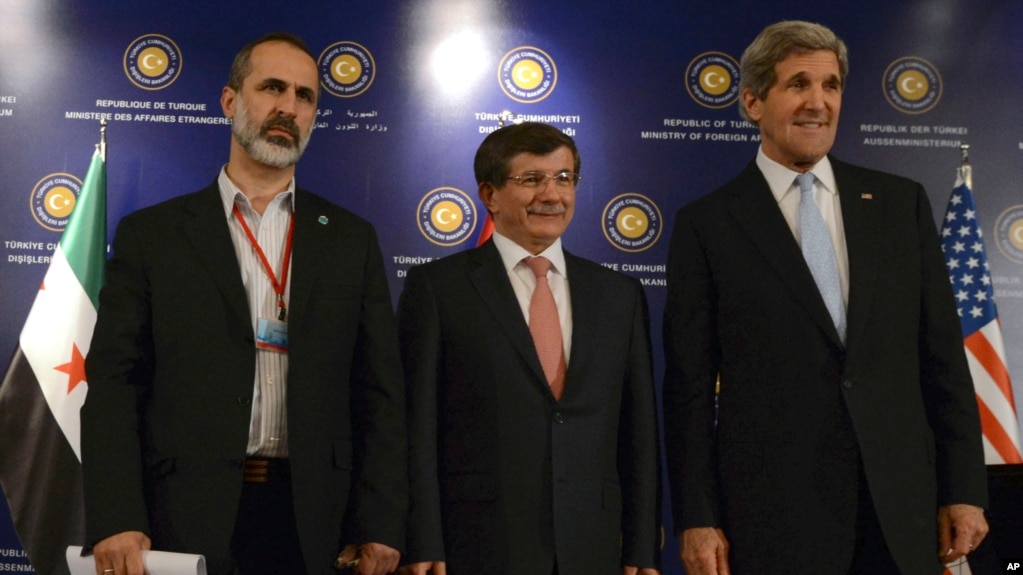
In fact, ARK was instrumental in spreading the first chemical weapons attack controversy of the Syrian war. On December 23, 2012, Syrian opposition groups accused the Syrian government of carrying out a chemical weapons attack in Homs, which ARK’s outlet Basma reported on.[21] The Obama administration immediately voiced skepticism that chemical weapons had been used in the Homs attack. However, a State Department cable, leaked to the press in January 2013 shortly after Obama’s rebuke, explained that ARK, Basma, and three unnamed ARK contacts in Syria had investigated and reported to the U.S. consulate in Istanbul that the Syrian military likely used chemical weapons, probably “Agent 15,” in Homs.[22]
Arms expert Jeffrey Lewis lambasted this narrative, writing in Foreign Policy that Agent 15 did not even exist. Agent 15 was one of the dubious UK intelligence claims concocted to demonize Saddam Hussein between 1998 and 2002. For those following news about Western intervention in Syria in early 2013, ARK was a known DoS partner creating anti-Assad propaganda through Basma. Lewis thus concluded that the leak, and possibly the cable itself, was probably produced by one or more dissatisfied U.S. officials trying to appeal Obama’s decision by having “a U.S.-funded propaganda group ‘confirm’ claims by Syrian opposition” first to the DoS and then to the press when Obama failed to have the desired reaction.[23]
After their official founding in October 2014, Syria Civil Defence, aka the White Helmets, became significant players in chemical weapons controversies of the war.
This article introduced some of the key soft-power agents and organizations that would shape Western policies toward Syria as well as events on the ground during the Syrian Civil War. Internal intelligence reports show that the U.S. government was aware of pervasive sectarianism and extremism among the main rebel forces involved, violence of the Syrian conflict.
Yet, U.S. soft-power agents involved in diplomacy, democracy promotion, and conflict resolution openly pushed for greater intervention, including a U.S. military solution to the conflict.
At the same time, the U.S. and its allies invested in a semi-covert media, governance and civil society campaign that would facilitate and justify the use of military and economic force against the Syrian government.
The next part of this series will look more closely at the methods, achievements and outcomes of the largely covert, multi-billion dollar foreign soft-power interventions in the conflict. It will also examine how these interventions related to the sectarian violence of the conflict.
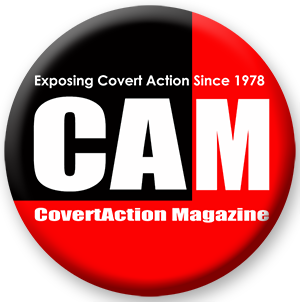
Defense Intelligence Agency, “Effects of Syrian Insurgency on Iraq, 14-L-0552/ DIA/287,” Department of Defense Information Report (August 2012), 289. ↑
Defense Intelligence Agency, “Effects of Syrian Insurgency on Iraq, 14-L-0552/ DIA/287,” 291. ↑
William Van Wagenen, “Salafis Throwing Bombs: How American and British Planners Partnered With al-Qaeda Affiliated Groups At the Start of the Syrian Civil War | The Libertarian Institute,” The Libertarian Institute, December 28, 2021; Oliver Boyd-Barrett, Conflict Propaganda in Syria: Narrative Battles (New York: Routledge, 2022), 136-138. ↑
CNN Wire Staff, “U.S. pulls envoy from Syria over safety concerns,” CNN, October 24, 2011; Tara McKelvey, “Arming Syrian rebels: Where the US went wrong,” BBC News, October 10, 2015. ↑
Carl Gershman, “The Arab Revolts: A Fourth Wave or an Ebbing Tide?” uploaded May 15, 2012, YouTube video, 1:01:35, 42:30-44:00. ↑
Suzanne Gamboa, “Sen. McCain slips into Syria, meets with Rebels,” USA Today, May 27, 2013. ↑
Erika Solomon, “U.S. Senator McCain pictured with Syrian rebel kidnapper: paper,” Reuters, May 30, 2013. ↑
Dion Nissenbaum, “John McCain Makes Secret Trip to Syria in Midst of U.S. Assessment,” Wall Street Journal, February 22, 2017. ↑
“Statement by Madeleine K. Albright on Syria,” Albright Stonebridge Group, September 6, 2013. ↑
Madeleine K. Albright and Stephen J. Hadley, “Middle East Strategy Task Force: Final Report of the Co-Chairs,” Atlantic Council, November 2016, 57, 64-66. ↑
For the timeline of the name change, see Justin Vela, “Holding Civil Society Workshops While Syria Burns,” Foreign Policy, October 10, 2012; Development Alternatives Incorporated, “Syria Regional Option (SRO) Final Report” (USAID/OTI Washington, April 2013), 25 https://pdf.usaid.gov/pdf_docs/pa00k16n.pdf.
ARK can also be traced back to 2009, when it was founded as ARK Lebanon. See “Ark Lebanon,” https://daleel-madani.org/civil-society-directory/ark-lebanon. ↑
Justin Vela, “Holding Civil Society Workshops While Syria Burns.” OSOS itself was set up by a new DoS bureau started in January 2012, the Bureau of Conflict and Stabilization Operations, which listed USAID as an interagency partner. The DoS MEPI program also provided $10 million in initial funds to the program (see U.S. Department of State, “CSO: One-Year Progress Report,” Situation Report (U.S. Department of State Bureau of Conflict and Stabilization Operations, March 11, 2013), https://reliefweb.int/report/world/cso-one-year-progress-report; Greg Miller, “Syrian activists say pledges of U.S. communications aid are largely unfulfilled,” The Washington Post, August 20, 2012. ↑
Damien Mcelroy, “Britain and US plan a Syrian revolution from an innocuous office block in Istanbul,” The Telegraph, August 26, 2012. The U.S. initially dedicated $25 million to the Syrian effort before increasing that pledge to $45 million, so the £5 million commitment by the UK may have also risen in subsequent months. ↑
“ARK,” ARK, accessed December 8, 2023, https://www.ark.international; Alistair Harris, “Alistair Harris | LinkedIn,” accessed December 8, 2023, https://www.linkedin.com/in/alistair-harris-91b94371/?originalSubdomain=uk. ↑
Vela, “Holding Civil Society Workshops While Syria Burns.” ↑
Mcelroy, “Britain and US Plan a Syrian Revolution from an Innocuous Office Block in Istanbul.”
See Vela, “Holding Civil Society Workshops While Syria Burns,” for confirmation that the Mcelroy article initially named Alistair Harris as the program overseer. ↑
ARK International, “Developing Civil Defence Capabilities,” accessed December 12, 2023, https://www.ark.international/impact/develop-civil-defence-capabilities. ↑
Jonathan Gornall, “Newsmaker: The White Helmets,” The National, September 29, 2016. ↑
Ana van Es and Anneke Stoffelen, “Kaag wanted to inform Parliament about fraud reporting to the foundation, officials stopped the letter (Translated from Dutch),” De Volkskrant, May 7, 2021; Syria Civil Defence, “Our Partners,” May 2019, Accessed April 20, 2021, https://web.archive.org/web/20190511204754/https://syriacivildefense.org/our-partners ↑
Anne Barnard, “Audio Reveals What John Kerry Told Syrians Behind Closed Doors,” The New York Times, September 30, 2016; Angel North, “Leaked audio of John Kerry’s meeting with Syrian revolutionaries/UN (improved audio),” uploaded October 4, 2016. YouTube video, 36:56, https://www.youtube.com/watch?v=e4phB-_pXDM. ↑
Josh Rogin, “Secret Syria chemical weapons cable revealed,” Foreign Policy, January 22, 2013. ↑
Rogin, “Secret Syria chemical weapons cable revealed.” ↑
Jeffrey Lewis, “Buzz Bomb,” Foreign Policy, January 25, 2013. ↑
CovertAction Magazine is made possible by subscriptions, orders and donations from readers like you.
Blow the Whistle on U.S. Imperialism
Click the whistle and donate
When you donate to CovertAction Magazine, you are supporting investigative journalism. Your contributions go directly to supporting the development, production, editing, and dissemination of the Magazine.
CovertAction Magazine does not receive corporate or government sponsorship. Yet, we hold a steadfast commitment to providing compensation for writers, editorial and technical support. Your support helps facilitate this compensation as well as increase the caliber of this work.
Please make a donation by clicking on the donate logo above and enter the amount and your credit or debit card information.
CovertAction Institute, Inc. (CAI) is a 501(c)(3) non-profit organization and your gift is tax-deductible for federal income purposes. CAI’s tax-exempt ID number is 87-2461683.
We sincerely thank you for your support.
Disclaimer: The contents of this article are the sole responsibility of the author(s). CovertAction Institute, Inc. (CAI), including its Board of Directors (BD), Editorial Board (EB), Advisory Board (AB), staff, volunteers and its projects (including CovertAction Magazine) are not responsible for any inaccurate or incorrect statement in this article. This article also does not necessarily represent the views the BD, the EB, the AB, staff, volunteers, or any members of its projects.
Differing viewpoints: CAM publishes articles with differing viewpoints in an effort to nurture vibrant debate and thoughtful critical analysis. Feel free to comment on the articles in the comment section and/or send your letters to the Editors, which we will publish in the Letters column.
Copyrighted Material: This web site may contain copyrighted material the use of which has not always been specifically authorized by the copyright owner. As a not-for-profit charitable organization incorporated in the State of New York, we are making such material available in an effort to advance the understanding of humanity’s problems and hopefully to help find solutions for those problems. We believe this constitutes a ‘fair use’ of any such copyrighted material as provided for in section 107 of the US Copyright Law. You can read more about ‘fair use’ and US Copyright Law at the Legal Information Institute of Cornell Law School.
Republishing: CovertAction Magazine (CAM) grants permission to cross-post CAM articles on not-for-profit community internet sites as long as the source is acknowledged together with a hyperlink to the original CovertAction Magazine article. Also, kindly let us know at info@CovertActionMagazine.com. For publication of CAM articles in print or other forms including commercial internet sites, contact: info@CovertActionMagazine.com.
By using this site, you agree to these terms above.
About the Author
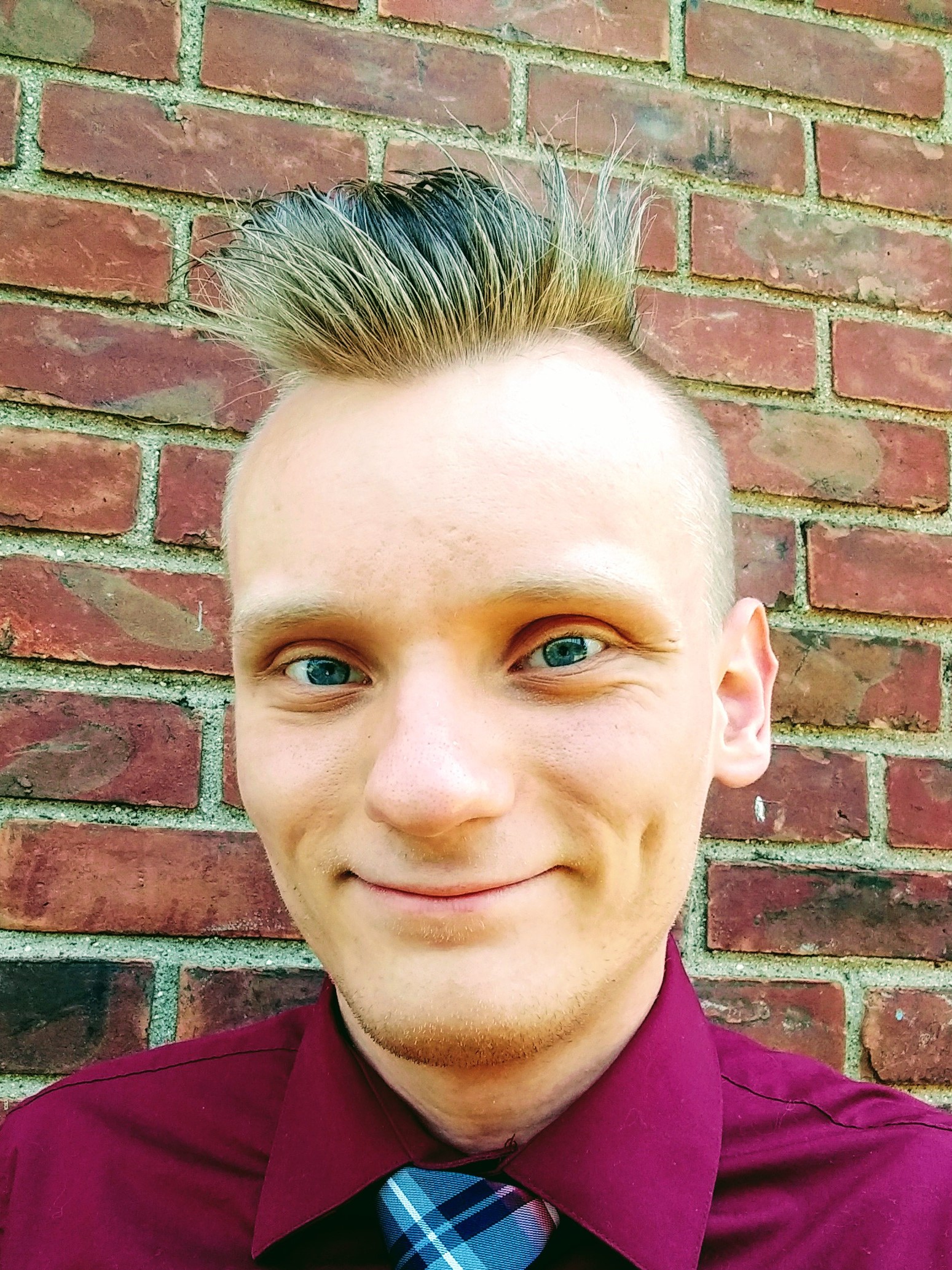
Ben Arthur Thomason received his Ph.D. in American Culture Studies from Bowling Green State University in 2024.
He specializes in the history, culture, and geopolitical economy of U.S. imperialism and soft power. He has published peer-reviewed articles, including “Save the Children, Launch the Bombs: Propaganda Agents Behind The White Helmets (2016) Documentary and Media Imperialism in the Syrian Civil War,” in The Projector (2022), and “The Moderate Rebel Industry: Spaces of Western Public-Private Civil Society and Propaganda Warfare in the Syrian Civil War,” in Media, War and Conflict (2024).
He is currently seeking to publish his manuscript, Make Democracy Safe for Empire: US Democracy Promotion from the Cold War to the 21st Century.
Get in touch with Ben by going to benarthurthomason.com or by emailing him at benthomason696@gmail.com.
